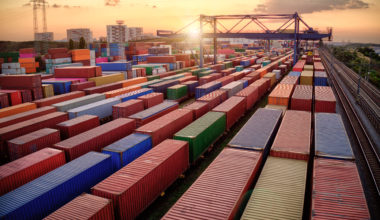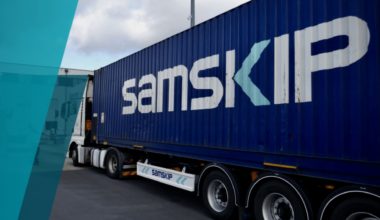A HOW-TO GUIDE
Due to issues such as demands stemming from increasingly advanced technologies, the “growing” impact of increased vessel sizes and attendant container loads, a lack of physical space to store containers, and a desire to simplify complex IT landscapes, many terminals are looking to advance beyond legacy systems and streamline their processes. However, in our conservative industry, many roadblocks are standing in the way of meaningful progress when upgrading from legacy systems. These range from the practical IT challenges to the more human challenges that come.
Table of Contents
This paper will outline the roadblocks and challenges concerning upgrading from legacy systems and then present a how-to guide for overcoming these issues. In order to ground the piece in real-life operations, we have leaned on several key global figures from across the industry for their insights. But first, let us briefly outline why it is necessary to advance beyond legacy systems, as this aids in framing the roadblocks and challenges to be explored later.
WHY EVOLVE FROM LEGACY SYSTEMS?
Legacy systems were developed when ports and terminals were largely manually operated. Given the transition from manual to semi- and fully automated operations, many terminals are actively pursuing or strongly considering upgrading their IT systems to provide a path toward streamlined practices that can:
• Mitigate the impact of increased vessel sizes and attendant container volumes • Facilitate automation • Offer “lighter infrastructure” opportunities • Simplify the complexity of managing disparate systems • Remove costly and cumbersome elements of the wider supply chain
Further still, upgrading systems offers another option for ports to increase capacity. Rather than building new infrastructure, which is a highly expensive and very difficult proposition for the modern port in a heavily built-up conurbation, upgrading systems offers the potential to meet their growth requirements in an IT-based process. This option has been undertaken by the Port of Hamburg, which aims to double capacity, but not space, by 2025. INFORM’s add-on AI and optimization software modules in Hamburg play a significant role in projects where the aim is to increase capacity without adding new physical infrastructure.
ROADBLOCKS AND CHALLENGES
Despite the port sector having the reputation for being conservative, the legacy of legacy systems – if you don’t mind the wordplay – is still a substantial factor in businesses globally, both inside and outside the port sector, with up to 85%-90% of Fortune 500 companies still utilizing legacy systems in some capacity.
While the situation is the same in the maritime sector, with the present situation described by Inna Kuznetsova, CEO at 1010data, as “on the tipping point” of moving on from legacy systems, there are ongoing initiatives to upgrade systems. These include the Port of Hamburg plan as well as the Port of Valencia, which is testing “black boxes” installed on 200 pieces of port equipment. Each black box collects information about equipment location, status, and energy consumption for use in real-time planning. The Port of Singapore is also testing a similar GPS-based traffic-monitoring system that tracks truck movements and notifies terminals when vehicles are approaching key facilities.
OPERATOR INSIGHTS
All of the above show that there is a will to move on from legacy systems in large, forward-thinking port terminals. However, many terminals still face the fundamental issue of moving on from tried and trusted systems into what is still fundamentally “the unknown.”
This leads to the issues terminal operators are actually experiencing in upgrading from legacy systems on the ground. Below, three figures from major ports and terminals/terminal operators outline how they are finding problems with older systems during a transition period as these systems tend to be heavily embedded in existing structures, as well as resistant to change.

Dr. Oscar Pernia, Director of Automation and Process Engineering at the terminal operator TIL, stated, “Legacy systems are traditionally monolithic, rigid, and resistant to change [which means they do not have] modular and resilient architecture that can minimize the risk when upgrading systems, as well as blocking them from securing iterative benefits when upgrading.”
Jan Gardeitchik, Senior Lead of Digitalization of Maritime Port Management Systems at the Port of Rotterdam, adds to this, “One of the big problems with legacy software systems is that they can be in the core of the operation. That means legacy systems are usually in a very critical area of port functionality, and that a lot of primary users utilize the system.”
Gardeitchik continued, “Henceforth, the step to replace legacy systems is a big one with many continuity risks. This is made even more complicated because there may be a lot of connections of such systems with other systems, and that means a lot of interfacing, which is an expensive and complex operation. Further still, one cannot just ‘switch off’ the [legacy] systems to make changes, so changes have to be done while the original system is still functional.”
Rich Cici, Senior Vice President of Technology and Projects at Virginia International Terminals, said he believes “upgrading systems is a problem regardless of the scenario.” However, he said it does become more complex when the usage dependency on the system is greatest.
Cici adds, “Software is the easiest to change and probably the fastest-changing because the technology changes quickly. I think the core issue is that people commit their brains to analyzing and solving problems on a selective basis. The rest of the time, they want to give their brain a rest and allow things to work on autopilot. Henceforth, change means less time on autopilot and more brainwork. This, in turn, is more tiring, and the result is pushback from the people [working the systems].”
The problems outlined above are numerous, yet they can be simplified down to the fundamental issue of one monolithic legacy system that is interwoven into the broader ecosystem. After a decade, few have any reliable information on the functionality and scope of legacy systems, the systems they connect to, the details of interfaces (on both the legacy system side and the vendor sides), etc. Add to this equation that workers innately expect operations to run on autopilot. Yet with regard to upgrades, this is not possible, and we have a monolithic system – and worker mentality – sitting at the center of an already complex and functioning port/terminal operation.
Concerning upgrading systems without affecting the broader terminal operation, Gardeitchik stated, “A way to overcome this is to partition the legacy system, if possible, and then replace it partition by partition. This greatly reduces the risk and offers possibilities to draw up a solid roadmap. Also, the number of users connected to a partition is, in most cases, smaller than the total users, and this makes the change management easier.”
This view is corroborated by Raul Valverde and Malleswara Talla’s 2017 paper “Reengineering of Legacy Systems into Supply Chain Systems: Traditional Data Oriented versus Process Oriented Approaches.” The paper focuses on organizations within the supply chain upgrading from legacy systems. Their research indicates that a staged reengineering of legacy systems – rather than a radical, one-shot, big-budget, complex, and expensive reengineering effort – is preferable. In the future, for them, the optimal plan is a “hybrid reengineering approach” in which the data model for reorganizing the data harmonizes with the process model for implementing the required business logic in a pragmatic way.

Dr. Pernia adds more specific detail on how a terminal should plan this change, stating operators should figure out the non-functional and functional requirements within legacy systems and make clear the implicit integration efforts first. “That is the key,” he said.
“The technology available today enables a reliable roadmap to upgrade so long as the system integration capability is well addressed and fully embedded in the upgrade project, as well as the subsequent change management stream. After this, the fundamental areas to be mindful of are testing, training [staff], and optimization,” Dr. Pernia added.
Cici concurs with Dr. Pernia’s final sentence on staff training. He emphasizes its importance even more, stating, “The best way to overcome the issue is with training and patience.” He further adds, “One thing that helps is to take the time to develop consistent, reliable processes. Change is hard. But when you are changing to a buggy, not-well-thought-out process that is constantly evolving, it’s almost impossible.”
A HOW-TO GUIDE FOR UPGRADING FROM A LEGACY SYSTEM
The complete guide is available for free on the INFORM website as it is quite extensive. In short, the 16-step process we have consolidated based on research, our industry experience, and insights from industry professionals (in both port and terminal operations as well as from other industries like finance and aviation) walks you through the complexity of the project. You’ll learn about the process from conceptual planning (assessing the smart approach, aligning stakeholder expectations, and building your team), project planning (outlining needed vs. unneeded functionality, evaluating the market, deciding on a development approach, planning interfaces), and project delivery (involving end-users early, starting to future-proof, building a roadmap, understanding risk mitigation) through to go-live and beyond (communication is crucial; test, test, and retest; and go-live isn’t the end).
CONCLUSION
While the will to upgrade from legacy systems is there for terminals, a clear industry roadmap beyond the conceptual is usually not. Terminals are discovering that simple, wholesale upgrades cannot be made. Instead, operators must seek to understand how their existing legacy systems are interacting with every part of their operation at a granular level. By doing this, operators can ascertain which parts of their operations can be upgraded seamlessly and which parts require more comprehensive long-term planning.
INFORM has worked on several projects that required upgrading a customer from a legacy platform, and the lessons outlined here correlate very strongly with our experiences in upgrading HHLA’s Container Terminal Burchardkai (CTB) and Kombi Terminal Ludwigshafen (KTL), to name but a couple. Both projects required a strong focus on planning and a phased, cutover approach as well as strong go-live and post-go-live support.
As more terminals undertake upgrades, operators must be mindful that the changes to systems are not just technological but have a very human impact too. Terminal workers have been heavily embedded in the inner workings of legacy systems, and changing these requires more effort and attention on their part. If the transition is not managed correctly and the system operators do not feel deeply involved and inspired during upgrades, these deficits could sabotage an operation.
In short, the key to upgrading legacy systems is in managing the upgrades at a granular and partitioned level, as well as managing the people on the ground.


